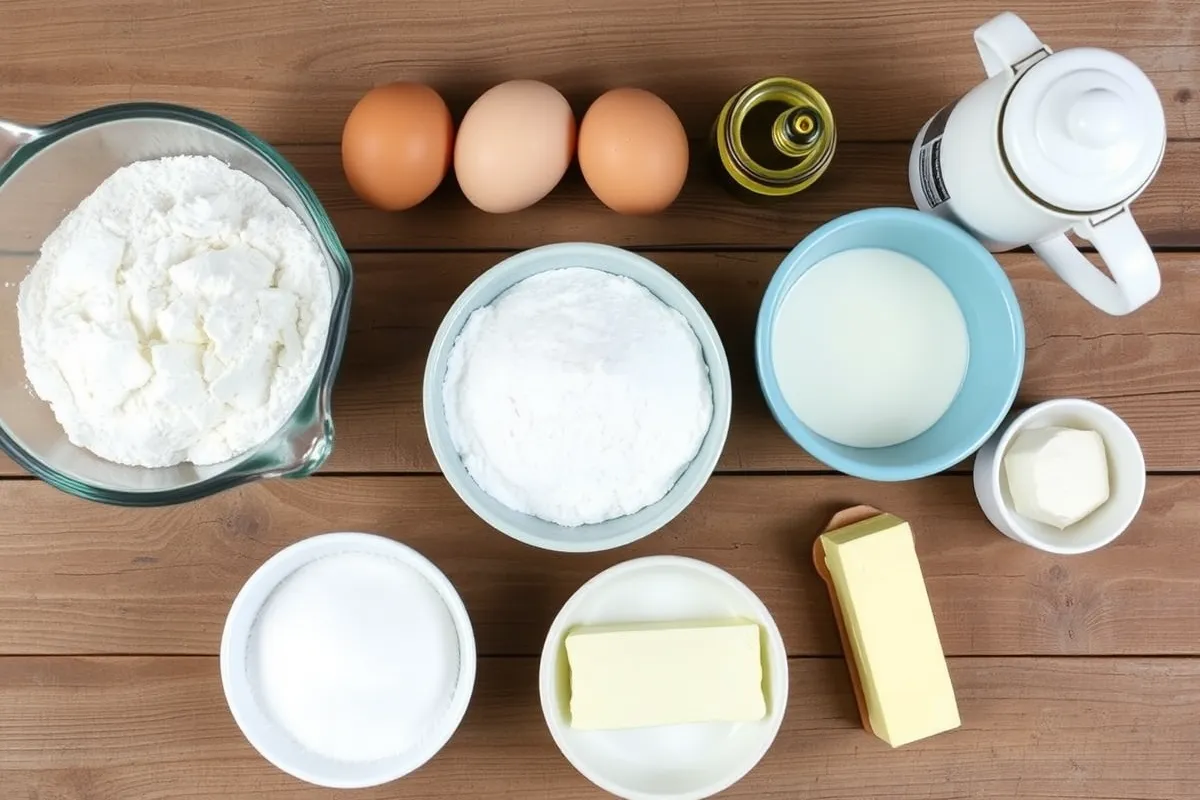Mini Belgian pancakes, often referred to as poffertjes or Dutch mini pancakes, are a delightful treat that blends tradition with irresistible flavor. These fluffy, bite-sized wonders are cherished for their rich history, unique preparation, and incredible versatility. Whether you’re new to this beloved dish or a seasoned fan, our guide dives deep into everything from their origins to serving ideas, ensuring you become an expert on this mouthwatering snack.
Let’s uncover the charm of mini Belgian pancakes step by step, starting with their rich heritage and cultural significance.
What Are Mini Belgian Pancakes?
Mini Belgian pancakes, known for their fluffy and airy texture, are a traditional European delicacy often served with a sprinkle of powdered sugar or a drizzle of syrup. These small, circular pancakes differ from their larger counterparts in both texture and preparation.
Unlike regular pancakes, mini Belgian pancakes are typically made with a yeast-based batter, which gives them their characteristic lightness and slightly tangy flavor. Originating from the Netherlands, they’ve become a global favorite, celebrated at food festivals, fairs, and even as a breakfast staple in many households.
History and Origin of Mini Belgian Pancakes
The story of mini Belgian pancakes begins in the Netherlands, where poffertjes emerged as a traditional street food. Historically, they were enjoyed during winter festivals and religious celebrations, symbolizing warmth and comfort in chilly weather.
Originally, these pancakes were crafted using buckwheat flour and yeast, which gave them a rich, nutty, and distinctive taste. However, as culinary practices advanced, their recipe gradually evolved to include wheat flour, enhancing their texture and making them fluffier and lighter. Over time, additional ingredients like vanilla, sugar, and butter were incorporated, further elevating their flavor profile and appeal.
Today, mini Belgian pancakes have transcended their humble origins to become a cherished culinary treasure. They resonate with people worldwide, delighting both traditionalists and modern food enthusiasts alike with their unique combination of history, taste, and versatility.
Popularity and Cultural Significance
In addition to their rich history, mini Belgian pancakes have grown into a cultural icon. They’re synonymous with joy, indulgence, and celebration, making them a staple at fairs and events. Their small, bite-sized form makes them perfect for sharing, further adding to their appeal.
From street vendors in Amsterdam to cozy kitchens in homes across the globe, these little pancakes carry an undeniable charm that bridges generations. Whether served traditionally or with modern twists, their versatility ensures that they never go out of style.
Ingredients and Preparation

Essential Ingredients for Mini Belgian Pancakes
The secret to achieving perfectly fluffy mini Belgian pancakes lies in their simple yet remarkably effective ingredient list. At the very heart of the recipe is yeast, a vital component that creates their signature light, airy texture and slightly tangy flavor. Additionally, essential ingredients such as all-purpose flour, fresh milk, eggs, sugar, butter, and a pinch of salt come together harmoniously to form the batter.
Each ingredient plays a crucial role—flour provides structure, milk adds moisture, and eggs contribute richness. Meanwhile, sugar enhances sweetness, and butter introduces a subtle, creamy depth. Lastly, the salt balances flavors, making every bite perfectly satisfying.
For authenticity, some recipes incorporate buckwheat flour, adding a nutty depth of flavor. To enhance the batter’s rise, you’ll need active dry yeast. Don’t forget the vanilla extract or a hint of cinnamon for added aroma. While the recipe is simple, using fresh and high-quality ingredients ensures the best results.
Traditional Preparation Methods
Making mini Belgian pancakes traditionally is a labor of love. Begin by activating the yeast in warm milk with a teaspoon of sugar. Once frothy, combine it with flour, melted butter, beaten eggs, and a pinch of salt. Mix until a smooth, lump-free batter forms.
Let the batter rest for about an hour to allow the yeast to work its magic. The mixture should double in size, becoming airy and full of bubbles. Using a poffertjes pan, spoon the batter into each cavity. Cook on medium heat, flipping them gently with a skewer or fork when the bottoms turn golden brown.
This time-honored method produces pancakes that are soft on the inside with a lightly crisped exterior. It’s worth every minute spent!
Modern Variations and Twists
While the traditional recipe remains beloved, creative cooks have introduced twists to cater to diverse palates. For a healthier option, swap out all-purpose flour for almond or oat flour. You can also replace dairy milk with almond or oat milk for a lactose-free version.
Sweeteners like honey or coconut sugar can substitute for refined sugar, adding a richer taste. For adventurous flavors, consider adding grated citrus zest, matcha powder, or even cocoa to the batter.
Savory versions are also gaining popularity, incorporating herbs, cheese, or vegetables into the mix. These modern variations demonstrate how mini Belgian pancakes can adapt to trends while retaining their unique charm.
Cooking Techniques
Using a Poffertjes Pan
A poffertjes pan is a must-have for authentic mini Belgian pancakes. This pan, with its signature dimpled design, ensures even cooking and a uniform shape. Start by lightly greasing the pan with butter or oil, and preheat it on medium heat.
Once the batter is ready, pour it into each cavity using a spoon or a piping bag for precision. Cook until small bubbles form on the surface and the edges begin to set. Using a fork or skewer, gently flip each pancake to cook the other side. The result? Perfectly round, golden-brown pancakes that are soft and fluffy inside.
Alternative Cooking Equipment
If you don’t have a poffertjes pan, don’t worry! A non-stick griddle or a mini muffin pan can work as substitutes. On a griddle, simply spoon small portions of batter and cook as you would regular pancakes, but for a shorter time.
For the mini muffin pan, pour the batter into each well and bake in the oven at 350°F (175°C) for 10–12 minutes. Though these alternatives may lack the authentic dimpled shape, the taste and texture will still be delightful.
Tips for Achieving the Perfect Texture
Achieving the ideal texture for mini Belgian pancakes requires attention to detail. First, don’t overmix the batter—this can lead to tough pancakes. Instead, gently fold the ingredients until just combined.
Allowing the batter to rest is crucial. The resting period not only activates the yeast but also enhances the flavor. Preheat your cooking surface to ensure even browning, and resist the urge to overcook; a light golden hue is all you need.
Finally, use fresh ingredients and measure accurately—these small details make a significant difference in the final product.

